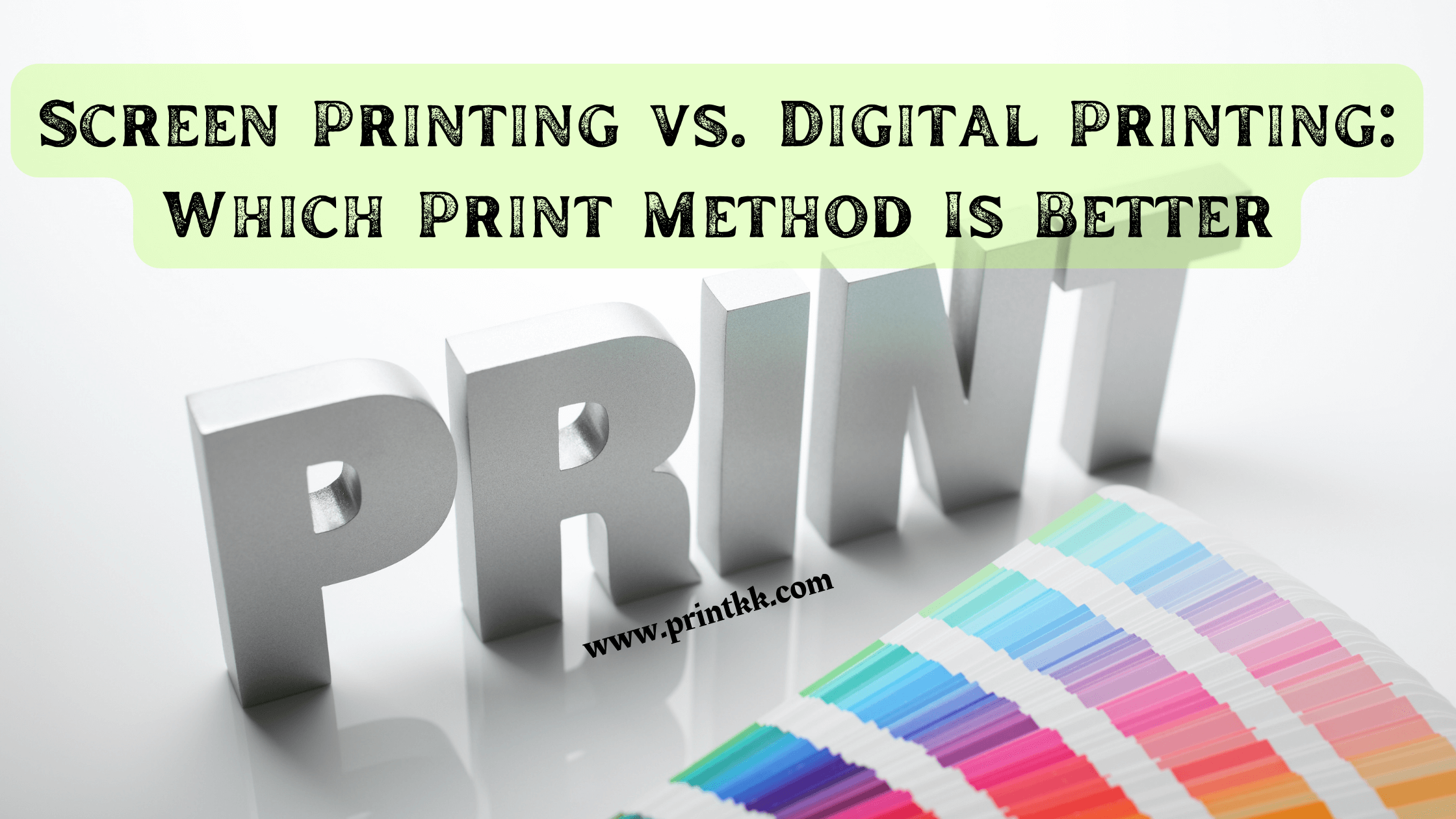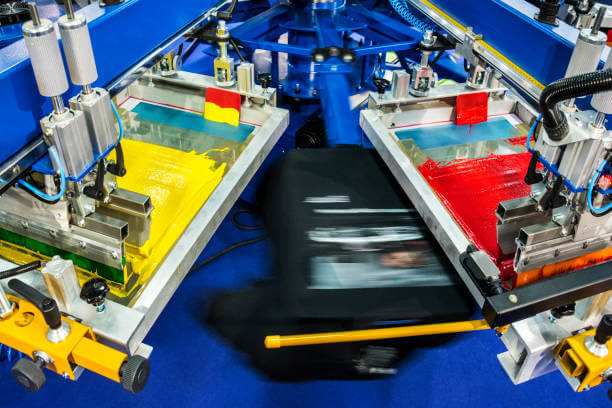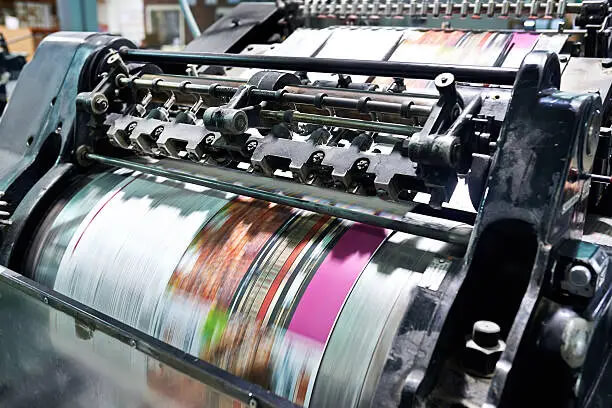
Are you navigating the complex world of printing methods for your next big project? Screen printing and digital printing have unique advantages for you to choose from. Whether you're a small business owner, a creative designer, or part of a larger organization, understanding these methods is crucial. Dive into our comprehensive guide that illuminates the pros, cons, and best applications of each technique, helping you make informed decisions for your printing needs.
Screen Printing

What Is Screen Printing?
Screen printing is a printing method with a long history and a long existence. This type of printing involves creating a template and using it to apply multiple layers of ink to the printed surface. Each color uses a different screen, printing one color at a time, and finally combining to make the final product.
This type of printing requires a high degree of precision, which increases the production time of the product, but can ensure that the final product is of high quality. Screen printing on a variety of materials such as fabric, paper and plastic have very good performance, so can adapt to the needs of a wide range of market products.
How Does Screen Printing Work?
Screen printing is a meticulous production process. You first need to set a screen for each color in the draft. Expose these screens to ultraviolet light and solidify the emulsion. When the unexposed lotion is washed away, a template is left on the screen.
The ink is then printed according to the template produced. Regardless of the material, each color needs to be applied in order. This detailed and complex printing process creates products that are bright and durable.
Pros and Cons of Screen Printing
Pros:
- Vibrant Colors: Screen printing excels in delivering intensely vivid colors, especially effective on darker materials.
- Durability: This technique embeds the ink deeply into the material, ensuring long-lasting prints that withstand repeated washing.
- Cost-Effectiveness for Bulk Orders: With screen printing, the more you print, the less each unit costs, making it ideal for large-scale orders.
Cons:
- Color Restriction: A separate screen must be set for each different color used, thus limiting the choice of color range during the design process.
- Higher Initial Setup Cost: The setup process for screen printing is more labor-intensive, making small runs more expensive.
- Longer Production Time: Due to the complexity of the setup, production time can be longer compared to digital printing.
Digital Printing

What Is Digital Printing?
Digital printing is an indispensable cornerstone of modern printing. This printing technology can make use of advanced printing equipment to print digital images directly onto a variety of materials. Digital printing can produce detailed and high-quality products, which is the best choice for personalized products. At the same time, the rapidity of this printing technology is ideal for small orders that require timely delivery.
How Does Digital Printing Work?
Understanding digital printing starts with recognizing its basis in modern technology. Unlike traditional methods, digital printing uses electronic files, such as PDFs or desktop publishing files, as a source. Printers, typically inkjet or laser, then directly apply the ink or toner onto a variety of materials, including paper, canvas, fabric, synthetics, cardstock, and more.
The process involves tiny droplets of ink or powdered toner being precisely applied to the material, creating the image layer by layer. This method allows for high-detail prints and a wide spectrum of colors.
Pros and Cons of Digital Printing
The modern approach of digital printing revolutionizes how images are transferred onto materials. Leveraging advanced technologies like inkjet or laser printers, this method is known for its ability to swiftly and accurately reproduce digital designs.
Pros:
- Quick Turnaround: Ideal for time-sensitive projects.
- High Precision: Perfect for detailed graphics and exact color matching.
- Versatility: Excellently suited for small-scale and personalized printing jobs.
Cons:
- Higher Cost for Bulk: Less economical for large orders compared to screen printing.
- Limited Durability: The prints may not be as long-lasting.
- Material Constraints: Some fabrics and materials may not be well-suited for digital printing.
This process is a boon for those requiring fast, detailed, and smaller quantity printing, offering unmatched flexibility and speed in the print-on-demand sector.
Compare the Difference Between Screen Printing and Digital Printing
The key difference between screen printing and digital printing lies in their techniques and outcomes.
Screen printing, an older method, uses stencils and ink pushed through mesh screens, ideal for bulk orders due to its cost-effectiveness in larger quantities. It's known for vibrant colors and durability, especially on dark materials.
Digital printing, on the other hand, employs modern technology to directly apply ink to the material. This technology quickly produces high-quality images of restored designs, making it ideal for small batches and orders that require timely delivery. The setup costs are lower, but per-unit costs can be higher for large orders.
Understanding these differences helps in selecting the right method based on project requirements, whether it's for vivid, durable prints in large quantities or for fast, detailed, and smaller runs.
Make the Final Decision: Screen Printing or Digital Printing?
Screen printing and digital printing have their unique advantages, and you can decide the final choice based on the specific business situation.
- Order Size: For large-scale orders, screen printing often becomes more cost-effective. It involves upfront setup costs, but these are amortized over larger quantities, making the cost per unit significantly lower. Conversely, digital printing is advantageous for smaller orders. With minimal setup requirements, it's more cost-efficient for small to medium runs.
- Design Complexity and Color Requirements: Digital printing is the go-to choice for intricate designs with multiple colors, fine details, and gradients. It offers high precision and exact color matching, making it suitable for complex imagery. Screen printing, while excellent for bold and simple graphics, is less suited for designs that require multiple colors and detailed gradients, as each color needs a separate screen.
- Material and Fabric Considerations: Digital printing caters well to light fabrics and paper, offering crisp and detailed prints. However, this printing technology may not be able to adapt to all materials. Screen printing is known for its adaptability, working effectively on a broader range of materials, including thick fabrics and diverse non-textile surfaces.
- Turnaround and Speed: If speed is a priority, digital printing offers a distinct advantage with its quick setup and printing process. It's ideal for projects with tight deadlines. Screen printing, on the other hand, requires more time for setup, especially for designs that involve multiple colors and layers.
All in all, making the final choice between screen printing and digital printing needs to be based on the specific needs of your business. By considering factors like order size, design complexity, material type, and required turnaround time, you can make an informed decision that aligns with your project's goals and budget.
FAQs
Is digital printing better than screen printing?
There is no exact answer to this question. Both digital printing and screen printing have their own unique advantages and can be chosen according to your business situation.
Is screen printing more expensive than digital printing?
Screen printing has a cost advantage for large volume orders, while digital printing is more suitable for small batch orders.
Which is more durable, digital printing or screen printing?
Typically, screen printing offers longer-lasting results due to the ink deeply penetrating the material. Under frequent washing and prolonged exposure to sunlight, digitally printed products may fade faster. Screen printing is thus preferred for items requiring durability and longevity.
Does digital printing last on shirts?
Yes, digital printing can create durable designs on shirts, especially when using high-quality inks and proper printing techniques. However, the longevity may not match that of screen printing, as digital prints can fade more quickly over time with frequent washing and exposure to the sun.
What type of print is best quality?
The best quality depends on your specific needs. Screen printing offers vibrant, long-lasting colors and is ideal for bulk orders. Digital printing excels in detailed, color-accurate prints for smaller quantities. The choice hinges on the project's scale, material, and desired durability.










 Global Shipping
Global Shipping





























